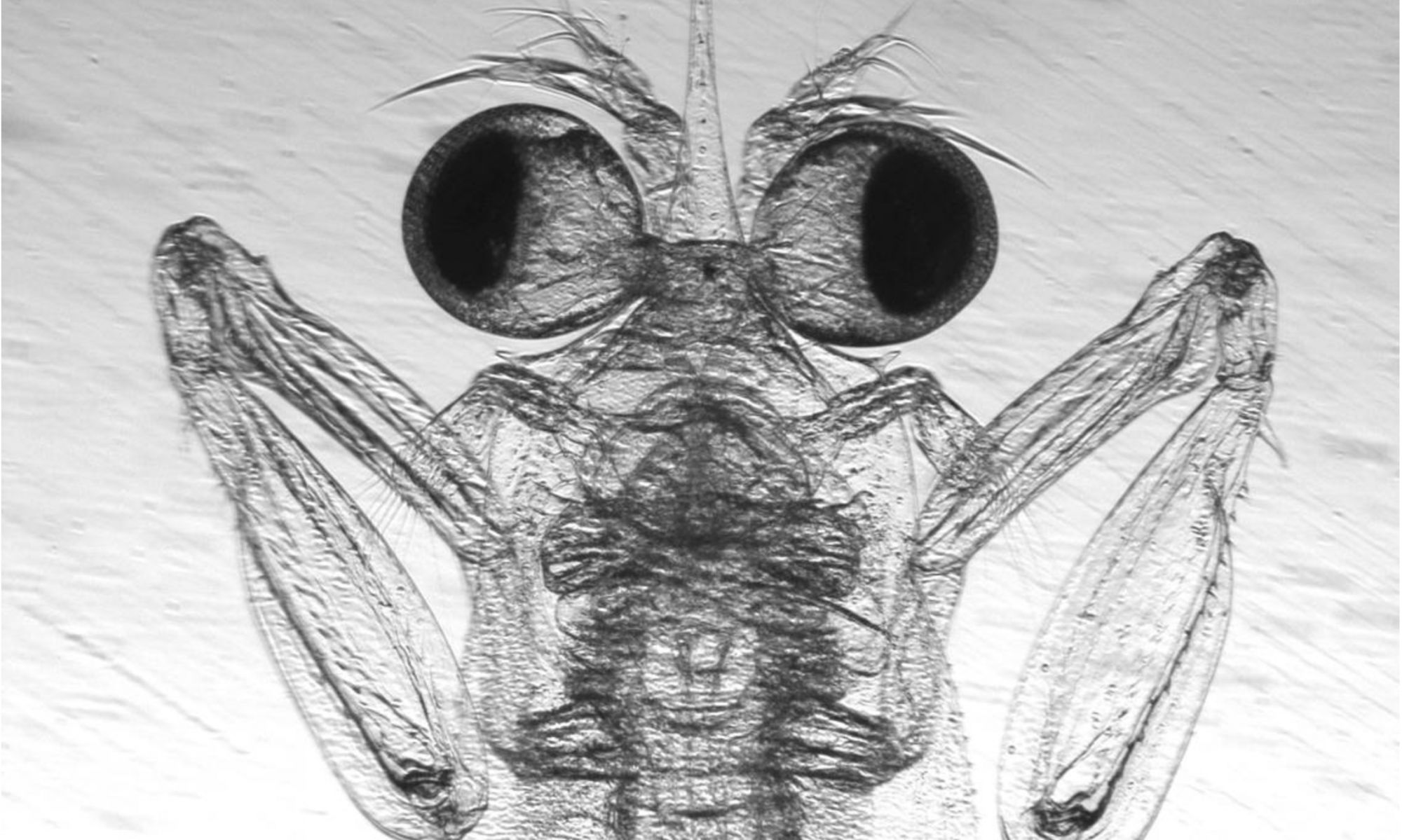Spiny lobsters (Palinuridae) are a family of approximately 47 species that have long spiny antennae and no claws. They live primarily in tropical waters around the world, with only a few temperate species. Approximately 125 million years ago, a sub-group of spiny lobsters evolved a sound-producing apparatus. These spiny lobsters make a “rasp” sound by rubbing a plectrum (an extension off of the base of each antenna) over a file which is located on each side of a plate below the eyes. Surprisingly, the plectrum is made of soft tissue and the file is macroscopically smooth. This means that spiny lobsters make sound differently than most arthropods, which rub a hard pick over a series of bumps to make sound (like a washboard). Instead, spiny lobsters use the friction between the soft plectrum and sticky-smooth file to make sound pulses. The use of frictional, “stick-slip” properties to generate sound vibrations is similar to the way that bowed-stringed instruments make sound. Spiny lobsters are the first animals to be described that use a “stick-slip” mechanism of sound production.
The analogy between bowed-stringed instruments and the spiny lobster’s acoustic mechanism functions primarily at the surface interactions between the bow-string and plectrum-file. A bowed-stringed instrument generates sound when the resin-coated horsehairs of the bow rub over the elastic string. As the bow rubs over the string, the bow periodically sticks to the string due to frictional forces. The oscillating sticking and slipping of the bow over the string sets up the vibrations in the string that are then transmitted to the highly tuned body of the instrument through the bridge. In spiny lobsters, the elastic, soft-tissue plectrum sticks and slips over the file’s surface to make sound. Each time the plectrum slips, it generates a burst of sound. Unlike the lovely sound of violins, spiny lobsters’ stick-slip rasps are raucous and abrasive; spiny lobsters lack the tuned resonators of the violin’s strings and body and thus generate broad-band sounds. We are continuing to work on the mechanics and evolution of biological stick-slip acoustics through biomechanical, kinematic and computer modeling techniques.
These abrasive, broad-band rasps are typical of anti-predator sounds, and, indeed, spiny lobsters make these rasp sounds primarily when interacting with predators. While there is a possibility that spiny lobsters communicate with each other using these sounds, most of our understanding of the behavioral context of these sounds revolves around their use for deterring predators. As it turns out, nearly all of the research on anti-predator sounds is from terrestrial environments and little is known about how aquatic organisms wield these noises and how they may function differently given the physics of underwater sound. Our most recent papers and fieldwork have focused on the propagation of anti-predator sounds in the ocean, the behavioral contexts in which the sounds are produced and their performance with different predators.
For our latest papers on this topic, check out our Google Scholar, Research Gate, or Orcid pages.
